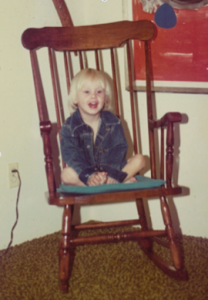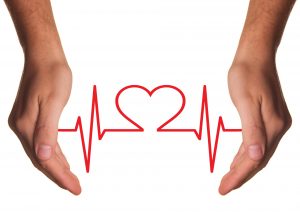 As a man there’s a part of me that’s embarrassed to share my story because of the lifetime of shame behind it. But we can only heal our wounds when we stop being defined by them.
As a man there’s a part of me that’s embarrassed to share my story because of the lifetime of shame behind it. But we can only heal our wounds when we stop being defined by them.
It’s ultimately a story of defining masculinity on my own terms, based on my own unique experiences, rather than conforming to our culture’s rigid definition of what it means to be a man. And if sharing my experience allows other men to come out from their childhood shadows and stand confidently in their place within the broad spectrum of what’s truly masculine, what is there to lose?
So here goes … growing up, I was the quintessential momma’s boy.
I was a quite and gentle kid, friendly and warm with adults but painfully shy and withdrawn from my peers. I was taunted by other boys as being a girl (I had long hair like my father who was a Vietnam vet), ridiculed as being a sissy (I preferred to hang out with girls because the topics of conversation went deeper than sports and cars), and my masculinity was sometimes questioned because I would refuse to fight (the stories of a long-haired pacifist from Israel taught me to turn the other cheek).
While my tender heart was originally the product of nature, being nurtured for most of my childhood without a father around clearly accentuated my gentle temperament. At the age of four I was abruptly immersed in the realm of the feminine as the result of my parent’s divorce. I became the center of my mother’s orbit, receiving essentially unlimited attention, adoration, and priority … and I ate it up. My experience of the feminine universe was that it was loving, filled with affirmative messages, and a strong sense of safety.
I was raised by my mother to be aware of and accepting of my emotions. I was told emotions were natural and okay, within reason. I was given access to the emotional language of women but no tools to navigate with them in the world as a man. My fluency with the feminine intelligence didn’t prepare me for the journey of masculinity within the rigid confines of our culture. It was like learning to speak Spanish in preparation for a trip to China. I couldn’t speak the native language of men, I couldn’t read the signs, and I often felt like a tourist traveling through unknown and potentially hostile lands.
This was tested a couple of years later with the arrival of a stepfather. While he cared for me in his own way, his love was not always gentle. He attempted to make a man out of me and did his best by passing on what he had learned about being a man. He meted out tough love because the world was harsh and real men had to be hard and intolerant of wusses or pussies in order to survive. Rather than growing tough from his love, I grew distant and retreated further from a connection to our culture’s definition of masculinity.
My experiences in early childhood taught me to be emotionally withdrawn from men. From my perspective they were either emotionally absent like my father or were aggressive and domineering, like my stepfather. They were generally not to be trusted. As a result I grew up avoiding male relationships and saw my fellow men through my childhood’s lense as either self-serving egoists focused on sports or cars or other shallow pursuits and pastimes. Or they were bullies only out to put their interests ahead of others by vying for alpha dominance within careers, athletics, or sexual pursuits.
As a boy I sought the refuge of my mother’s love, then in my teen’s and 20s I became a serial monogamist always seeking the sanctuary of a woman’s affection. What I succeeded to do as a man was trade up my status as momma’s boy to that of a pussy-whipped male (to use the shaming vernacular). The pleaser force was strong in me. I continued to sell out my masculine nature, whether to have a triste of the heart or access to a regular source of carnal connection, for fear of losing a reliable bond to Eros.
The reality was that fulfilling my needs for feminine attention and unconditional love came at a steep price, with many conditions and expectations. These were sometimes as emotionally harmful as the abandonment or harshness of the masculine from which I spent much of my life running. I didn’t come to understand the paradox I was in until the crucible of my own marriage forced me to find my voice and create healthy boundaries.
In my late 30’s I had finally begun the process of differentiation. Until then I had been afraid to release the wild man and connect with the masculine out of fear that I’d become one of “those” men from my childhood. Not having gone through any ritual to extract me from the women’s hut, I was bound to the life of being only half a man, never fully stepping into the power of a mature masculine. And I didn’t really see the need to find the balance until the birth of my first son awoke some latent masculine responsibilities. It was then I saw clearly the legacy I was potentially passing on to him if I did not do the work of becoming a whole man, on my terms.
Now in my 40s I claim my masculinity holding both the fierceness of the wild man and the gentleness of the lover’s heart. I’m finding balance in my natural masculinity that allows me to understand how the men I was shunning were themselves wounded and stuck in the “act like a man box,” something that is part of our cultural fabric and which is unwittingly maintained by its men as well as its women.
And now we’ve arrived at the gifts of the fatherless boy:
Gift #1. Creating my own version of masculinity that is grounded in emotional intelligence, the fierceness of the heart-based warrior, and an outsider’s perspective that can call bullsh*t on both the masculine and feminine stereotypes that keep both men and women small and unable to live up to their full potential.
Gift #2: Being the father that I never had, on my own terms. Sometimes it’s a major struggle mapping the wilderness that is fatherhood in the 21st century. What are masculinity, sexuality, and relationship and how do we give our kids the tools (rather than rules that will quickly become outdated) by which to navigate the dynamics of our times? (Hint: stay curious and compassionate.)
Gift #3: I’m more at peace with the internal conflict of trusting men in order to be in brotherhood with them, without having to subvert my own sense of integrity or values. I can hold to my own vision and definition of masculinity and create meaningful relationships with women and with men, along with the healthy boundaries necessary to maintain them.
Gift #4: A deep appreciation for the male mentors in my life who successfully escaped and lived outside of the man box and reflected the innumerable possibilities for other men. Because of them I am now a resource for men who want to connect with their own sense of the power and freedom of a mature masculine outside the confines of our culture’s narrow definition of what it means to be a man.
There’s work to be done here, and it’s not about being more feminine or masculine. Rather, we need only awaken to, accept, and cultivate the unique masculine-feminine balance that already exists within us. Not necessarily easy work, but the results will enrich a lifetime and make a priceless gift for generations to come.



Recent Comments